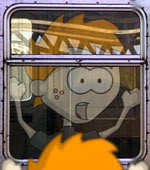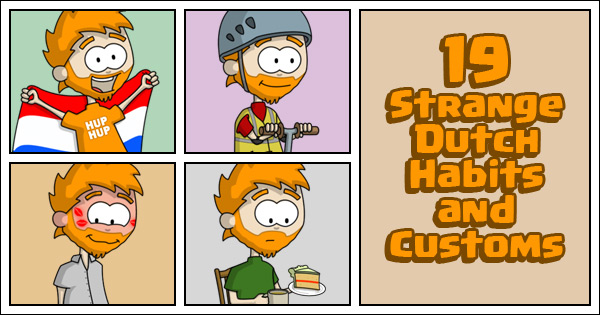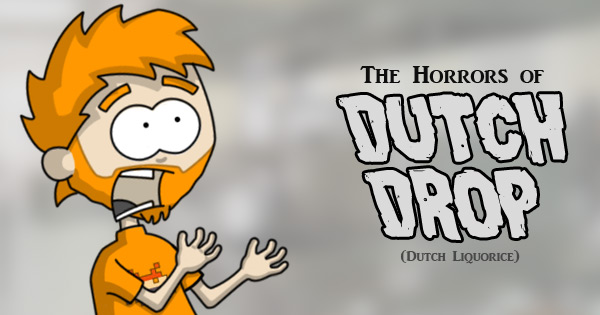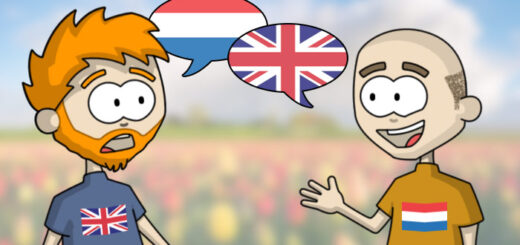Public Transport in The Netherlands – Trains, Trams and Busses

Virtually every city, town and village in Holland is connected by some form of public transport. Lots of Dutch people, tourists and expatriates use the many trains, trams, taxis, buses, metros, water taxis and ferries to travel around the country every day. Since I don’t have a car (and have not driven in nine years) I also use public transport quite a lot for travelling to and from work. In the mornings I spend a groggy train journey trying to wake up before getting crammed into a tram with everyone else.
In general the Dutch public transport is a lot better then the public transport in England. The trains and buses are cleaner, there are fewer delays, fewer strikes and fewer mistakes. However, there are still a few things travelers need to be aware of as they travel around the country.
Public Transport in The Netherlands
A common way to pay for travel between zones on buses, trams and metro lines is with a strippenkaart (Strip Card). Every time a strippenkaart is used it has to be stamped in one of its free spaces. The amount of zones being travelled reflects how many of the free spaces should to be used (plus one). If you are ever lucky enough to completely fill a Strippenkaart don’t forget to shout ‘full house’ and claim your prize from the driver.
When travelling by train it is always important to keep your wits about you. This is because the NS (Dutch rail company) employees enjoy playing mind games with commuters. One of the train operators’ favourite games to play just before departure is to close all the doors apart from one at the far end of the train. They do this to give last second late arrivals hope. The conductor can often be seen leaning out of the last door so they can watch panicked commuters run in desperation. Then, just as the victim arrives at the door it is closed and the train starts to move away, leaving them cursing and out of breath on the platform.
Train announcers don’t miss out on the fun either and will often wait until the last moment to announce platform changes. They might have a score system with extra points given for the amount of suitcases a tourist has to drag behind them or they may just enjoy watching commuters run back and forth.
The trains themselves usually have more first class compartments then are actually needed. First class tickets might cost a lot of money and entitle their users to a certain level of luxury but one carriage per first class passenger seems a bit over the top.
Fight For The Tram
Commuters may be the victims on the trains but by the time they reach the trams the shoe is on the other foot. Maybe it is because of the frustration they have suffered at the hands of the train operators that they treat the trams with such aggression. There are several rules of engagement when attempting to successfully board a tram.
– There is no such thing as a Dutch queue, only a mass of people all trying to get on at once.
– Elbows determine who gets on first.
– Exit Only and Entrance Only signs on tram doors are there to be ignored.
– When the tram operator tries to close the doors to leave it is customary to simply force them open again.
– There is always room for more people even if passengers are already hanging out of the windows.
– The best time to push passed a fellow passenger is as the tram takes a sharp corner at speed.
Despite having no power over the actions of commuters tram operators stay quite cheery and will often try to make the journey more interesting for their tormentors by singing out the names of stops. Dam Square might suddenly become “D-du-du-da-dam Squareeeeeeee” or Spui might become “Spu.. spu.. spuiiiiiiiiiiii.” To my knowledge there has not been a tram sing-a-long but it might happen one day.
Tram operators sometimes help tourists as well by announcing near by attractions when arriving at a stop. If there is a group of loud English lads on the tram the operator makes a point to announce Dam Square as the stop for the Red Light District. This might seem like it is playing on an unfair stereotype but you’d be surprised the amount of times one in the group will shout to his friends, “This is our stop.”












Ooops sorry, you had wrote it earlier, correction… Why didn’t i come across this post earlier ! ;)